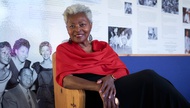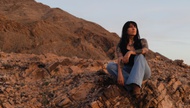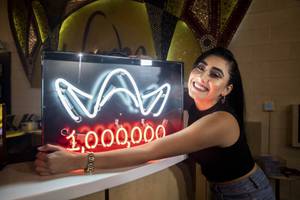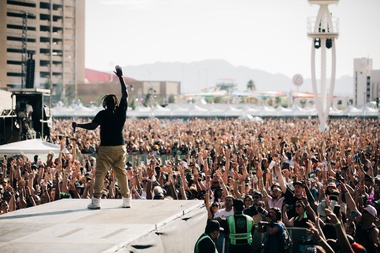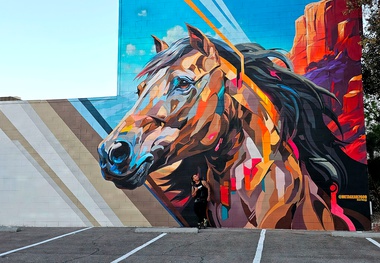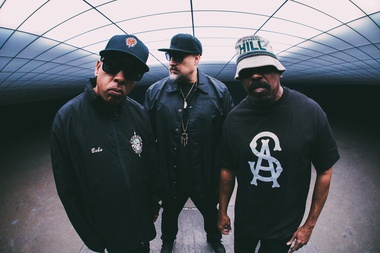Barbara Molasky, founding president of the Neon Museum, says she was taken with Las Vegas’ lights from the start—long road trips she took from New York to visit her sister here. The view coming over Boulder Highway had been described to her as a “diamond necklace,” because of the “small cluster in the center and then strands going out—and it really did look like that,” she says.
Molasky moved to Las Vegas in August 1970. “I came for one year. It’s been a long but wonderful year,” she says with a laugh.
In 1995, while working for then Las Vegas Mayor Jan Jones Blackhurst in the neighborhood services department, Molasky came across some interesting documents from Steve Weeks, an employee of sign manufacturer YESCO, expressing concern that some of Las Vegas’ classic neon beacons might be getting ruined.
Molasky sprang into action, and her efforts eventually led to the creation of the Neon Museum, which celebrated its 10-year anniversary last October.
The Weekly chatted with Molasky and the museum’s executive director, Aaron Berger, about preserving some of Las Vegas’ iconic signs and the museum’s continued mission.
At the time, why did you feel it was so important to preserve these signs? Barbara Molasky: I remember as a kid having outings in lower Manhattan … There were a lot of really cool neon motels and hotels down there, and there was something very romantic about it to me. Then when I moved to Las Vegas, I had such incredible memories of the different hotels that I had gone to, because I had never seen anything like it.
It’s iconic for Las Vegas. It’s our history, and when things started to be imploded, I was just so happy that a lot of those beautiful works of art were preserved.
How many pieces are housed at the Neon Museum now? Aaron Berger: The museum has about 800 pieces, about 250 of which are on display. We have quite a number that are in storage units and storage facilities. Our goal is to work at restoring those pieces and getting them back out into public view. That’s a major initiative.
How do you think these signs help tell the story of Las Vegas? AB: There is no city—when it comes to neon—like Las Vegas. We really are iconic in our use of neon. I like to paint a picture for people about coming from Los Angeles [or] across the desert—you see this glow of neon from 15 miles away. … And then, of course, the signs themselves tell the story of Las Vegas. When you walk through the boneyard, you’re going to learn about the stories of the civil rights movement here in Las Vegas. You’re going to learn the stories of women, the LGBT story, the story of the Latin community, the Native American story—the Paiutes—you’re going to hear all of these different perspectives that are brought to you, as told through the medium of neon.
As someone who came from the South, I was genuinely enlightened to learn the story of integration in the West, and how Las Vegas addressed integration. It was really surprising to me that that was part of the story of what the Neon Museum was telling and honestly one of the reasons why I wanted to join the team.
What’s on the horizon for the Neon Museum? AB: One of the things that you’re going to see in the beginning of 2023 is, for all the signs [around town] that are historic, some educational material is going up on the signage. … [For example,] the significance of the Hacienda horse and rider … is that this is potentially one of the first signs created in the U.S. that depicts a nonwhite person as its subject matter—not characterization. [It’s] actually showing a caballero on a palomino.
It’s an important placeholder in history, sitting at that incredibly important intersection [Fremont Street and Las Vegas Boulevard], and now we’re going to add that wonderful kind of acknowledgment of its history.
We also just completed our first year of Duck Duck Shed, a four-day celebration of Las Vegas architecture, design and culture. … Over 97% of the people who attended said that they want this to be an annual event. So we’re figuring out the pros and cons and learned lessons, but we are going to keep this going in years to come and hopefully attract more audiences to come and appreciate the architecture and culture and history that’s here.
Click HERE to subscribe for free to the Weekly Fix, the digital edition of Las Vegas Weekly! Stay up to date with the latest on Las Vegas concerts, shows, restaurants, bars and more, sent directly to your inbox!

